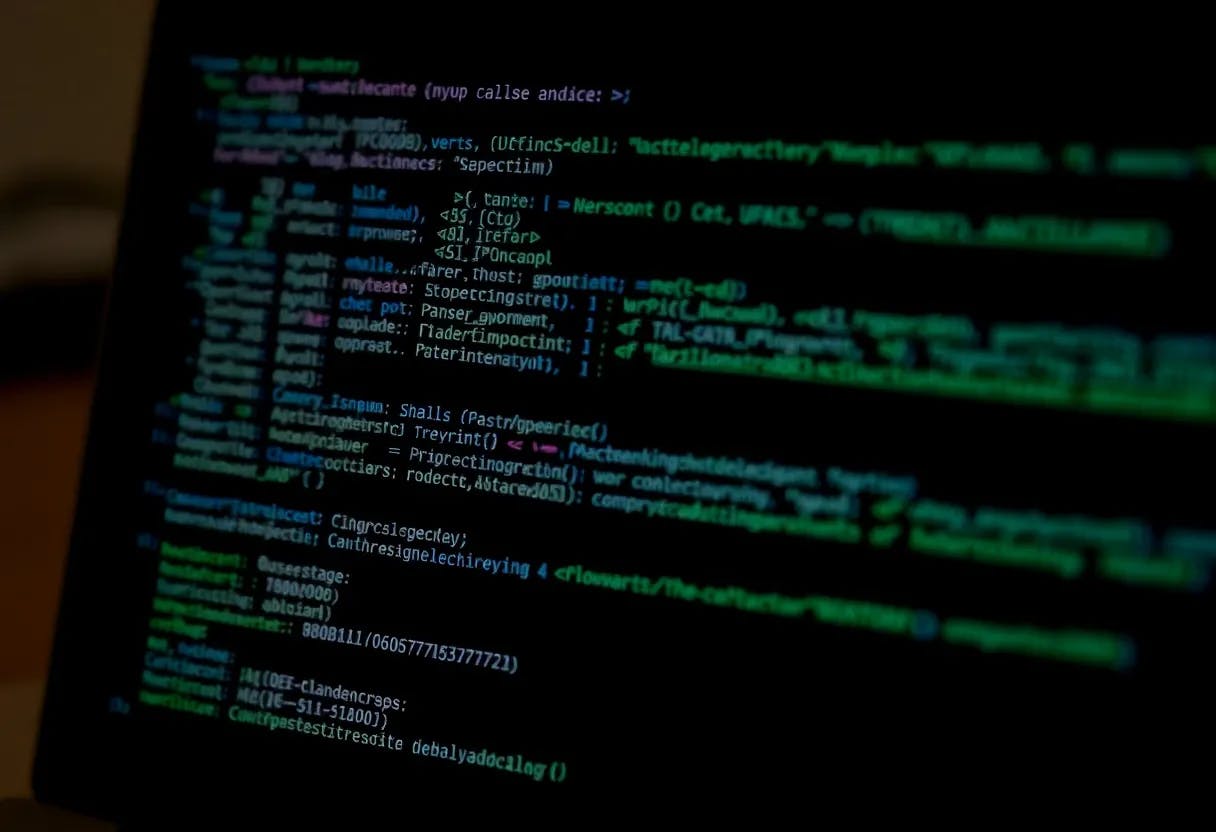Go channels are one of the language’s signature features. They provide a structured way for goroutines to communicate and coordinate. Instead of manually sharing memory and managing locks, channels let goroutines send and receive values directly, ensuring that data is transferred correctly and synchronization is handled automatically.
But what really happens when we write something like:
ch := make(chan int)
go func() {
ch <- 42
}()
value := <-ch
Under the hood, channels are not magic. They are a carefully engineered data structure in the Go runtime, combining a ring buffer, wait queues, and integration with the scheduler.
In this post, we’ll explore the internals: how channels are represented, how send and receive operations work, what happens when you close a channel, how select interacts with channels, and how the scheduler and memory model come into play.
Historical Context
Go didn’t invent the concept of channels. They are inspired by Communicating Sequential Processes (CSP), introduced by Tony Hoare in 1978. The core idea: processes don’t share memory directly, they communicate by passing messages.
Other influences include:
- Occam, a CSP-based language for the Transputer.
- Limbo/Newsqueak, which brought message-passing concurrency to Plan 9.
- Rob Pike and Ken Thompson’s work on Plan 9, emphasizing simplicity and safe concurrent patterns.
The channel primitive embodies the CSP principle that underpins Go’s concurrency philosophy: don’t communicate by sharing memory; share memory by communicating.
In contrast to Java’s BlockingQueue or pthreads condition variables, Go chose to make channels built into the language, with first-class syntax and tight runtime integration. This allows channels to express communication patterns naturally while remaining safe and type-checked.
hchan: Memory Layout & Implementation Details
Every channel created with make(chan T, N) is represented internally by an hchan struct. Here’s a simplified view:
type hchan struct {
qcount uint // number of elements in the buffer
dataqsiz uint // buffer capacity
buf unsafe.Pointer // circular buffer for elements
elemsize uint16 // size of each element
closed uint32 // is channel closed?
sendx uint32 // send index into buffer
recvx uint32 // receive index into buffer
recvq waitq // waiting receivers
sendq waitq // waiting senders
lock mutex
}
Fields Breakdown:
- Ring buffer: Buffered channels use
bufas a circular array.sendxandrecvxwrap around modulo buffer size. - Goroutine queues:
recvqandsendqare linked lists of blocked goroutines, each represented as asudogin the runtime. We’ll briefly touch onsudogin the next section. - Closed flag: Once set, it changes the semantics of send and receive.
- Lock: Each operation on a channel acquires the lock to maintain consistency.
The memory layout is designed for fast common paths:
- The buffer is contiguous in memory, improving cache locality.
- The queues are lightweight linked lists, avoiding large allocations unless many goroutines are blocked.
- Fields like
sendx,recvx, andqcountallow the runtime to quickly determine whether a send/receive can proceed immediately.
hchan is allocated on the heap. That means it’s managed by Go’s garbage collector just like slices, maps, or other heap objects. When there are no references to a channel, the hchan header and its associated buffer become eligible for collection.
Concurrency control is provided by the embedded lock (hchan.lock). Internally, Go uses a spin–mutex hybrid strategy for this lock: in the uncontended case, goroutines may briefly spin to acquire it, avoiding expensive context switches. Under contention, they fall back to a traditional mutex with queuing. This design reduces overhead for high-frequency channel operations while still handling contention robustly.
Together, these details make hchan both lightweight enough for everyday concurrency and sophisticated enough to handle thousands of goroutines hammering the same channel under load.
sudog in the Go Runtime
A sudog (“suspended goroutine”) is an internal runtime structure that represents a goroutine waiting on a channel operation.
The naming comes from old Plan 9/Alef/Inferno runtime code, which influenced Go’s runtime. In that lineage, su stood for synchronous, so sudog means something closer to synchronous goroutine record.
When a goroutine tries to send or receive on a channel and can’t proceed immediately (because there’s no matching receiver/sender):
- The goroutine is marked as waiting.
- The runtime creates or reuses a sudog object to store metadata about that wait.
- This
sudogis put into the channel’s wait queue (a linked list for senders and another for receivers). - When a matching operation happens, the
sudogis popped off the queue, and the corresponding goroutine is woken up.
What’s Inside a sudog?
From the Go runtime source (runtime/runtime2.go), a sudog holds:
- A pointer to the goroutine (
*g) that’s blocked. - The element pointer (
elem) for the value being sent/received. - The channel it’s waiting on.
- Links to the next/previous
sudogin the wait queue. - Debug/synchronization fields (like stack position, select cases, etc.).
In simplified pseudocode:
type sudog struct {
g *g // the waiting goroutine
elem unsafe.Pointer // value being sent/received
c *hchan // channel this sudog is tied to
next *sudog // linked-list pointer
prev *sudog
// ... other bookkeeping
}
So the sudog is the “ticket” that says:
This goroutine G is parked on channel C, waiting to send/receive the value at elem.
Lifecycle of a sudog
- Created/attached when a goroutine blocks on
ch <- xor<-ch. - Enqueued into either the send queue or receive queue inside the channel (
hchan). - Dequeued when a matching operation arrives.
- Used to resume the blocked goroutine by handing its value off and scheduling it runnable again.
- Recycled by the runtime’s pool for reuse (to avoid allocations every time).
Why Not Just Store the Goroutine?
Because the runtime needs extra context: not only which goroutine is waiting, but also what it’s doing (sending or receiving, which channel, which value pointer, which select case). The sudog bundles all of that into a single structure.
A key detail is that sudogs are pooled and reused by the runtime. This reduces garbage collector pressure, since channel-heavy programs (like servers handling thousands of goroutines) would otherwise generate massive amounts of short-lived allocations every time a goroutine blocks.
Another subtlety: a single goroutine can be represented by multiple sudogs at once. This happens in a select statement, where the same goroutine is registered as waiting on several channels simultaneously. When one case succeeds, the runtime cancels the others and recycles those extra sudogs.
Lifecycle of Send/Receive
Channel operations have a multi-step journey that ensures correctness under concurrency. Let’s break down both sending and receiving:
Sending a Value (ch <- v)
1. Acquire lock
- Every send operation starts by acquiring the channel’s mutex.
- This ensures that multiple goroutines attempting to send or receive simultaneously do not corrupt internal state.
2. Check waiting receivers
- If a receiver is blocked in
recvq, the runtime can immediately copy the value to the receiver’s stack. - This is the fast path: no buffering is necessary, and both goroutines can proceed immediately.
- Edge case: if multiple receivers are waiting, the runtime dequeues one at a time in FIFO order to maintain fairness.
3. Check buffer availability (for buffered channels)
- If no receiver is waiting, the send checks if the buffer has space.
- If space exists:
- Place the value at
buf[sendx]. - Increment
sendx(modulo buffer size). - Increment
qcount. - Release the lock and return.
- Edge case: high contention may cause the buffer to fill rapidly. The runtime ensures that multiple senders do not overwrite each other by keeping the mutex locked during the insertion.
4. Block if necessary
- If the buffer is full and no receiver is waiting:
- Create a
sudogstructure representing the current goroutine and its value. - Enqueue it in
sendq. - Park the goroutine, the scheduler removes it from the run queue.
- When a slot becomes available (either a receiver consumes from the buffer or another sender is dequeued due to a
selectwakeup), the goroutine is unparked.
5. Edge cases
- Sending on a closed channel immediately panics.
- Multiple blocked senders: senders are dequeued in FIFO order to avoid starvation.
- Spurious wakeups: the scheduler may wake a goroutine that finds the buffer still full, it will requeue itself.
Receiving a Value (x := <-ch)
1. Acquire lock
- Protects access to the buffer and queues.
2. Check waiting senders
- If a sender is blocked in
sendq: - Copy the sender’s value directly to the receiver’s stack.
- Wake the sender.
- Return immediately.
- Edge case: multiple senders waiting for an empty buffer – runtime dequeues one sender per receive, ensuring order and fairness.
3. Check buffer content
- If buffered values exist:
- Take the element at
buf[recvx]. - Increment
recvx. - Decrement
qcount. - Return immediately.
- Edge case: a buffered channel that is near empty may have multiple receivers contending – lock ensures one receiver consumes each element safely.
4. Check closed channel
- If the channel is closed and the buffer is empty, the receiver returns the zero value.
- Any subsequent receives continue to return zero values without blocking.
5. Block if necessary
- If no data is available and the channel is open:
- Create a
sudogrepresenting the receiver. - Enqueue it in
recvq. - Park the goroutine until a value becomes available.
6. Edge cases
- Multiple blocked receivers on a channel that becomes closed: all are unparked and see zero values.
- Receivers that wake up due to a sender being unblocked from a select statement handle the value correctly, even under high concurrency.
Simplified Pseudo-Code: chansend / chanrecv
func chansend(c *hchan, val T) {
lock(c)
if receiver := dequeue(c.recvq); receiver != nil {
copy(val, receiver.stackslot)
ready(receiver)
unlock(c)
return
}
if c.qcount < c.dataqsiz {
c.buf[c.sendx] = val
c.sendx = (c.sendx + 1) % c.dataqsiz
c.qcount++
unlock(c)
return
}
enqueue(c.sendq, currentGoroutine, val)
park()
unlock(c)
}
func chanrecv(c *hchan) (val T, ok bool) {
lock(c)
if sender := dequeue(c.sendq); sender != nil {
val = sender.val
ready(sender)
unlock(c)
return val, true
}
if c.qcount > 0 {
val = c.buf[c.recvx]
c.recvx = (c.recvx + 1) % c.dataqsiz
c.qcount--
unlock(c)
return val, true
}
if c.closed != 0 {
unlock(c)
return zeroValue(T), false
}
enqueue(c.recvq, currentGoroutine)
park()
unlock(c)
return
}
Direct Stack Copy vs. Buffered Copy
An important optimization in Go’s channel implementation is how values are copied:
- Buffered path: if the channel has a buffer and it’s not full, a sender copies its value into the heap-allocated channel buffer. , when a receiver comes along, the value is copied again – from the buffer into the receiver’s stack. That’s two memory moves, plus buffer bookkeeping.
- Unbuffered (synchronous) path: if a receiver is already waiting, the sender bypasses the buffer entirely. The runtime copies the value directly from the sender’s stack frame into the receiver’s stack frame. This avoids the intermediate heap write and read, making synchronous sends/receives about as efficient as they can be.
This is part of why unbuffered channels are sometimes faster than buffered ones under low contention: fewer memory touches and no extra buffer indirection.
It also explains why channels can safely transfer values without data races: because the handoff is done via controlled stack or buffer copies managed by the runtime, not by exposing shared mutable memory.
Closing Channels
Closing a channel is more complex than it seems due to multiple goroutines potentially waiting to send or receive.
Step-by-Step Behavior
1. Acquire lock
- Ensures the channel state is updated atomically.
2. Set closed flag
- Changes semantics for all future sends and receives.
3. Wake all receivers
- Every goroutine in
recvqis unparked. - They attempt to receive: if the buffer still has elements, they get real data; if the buffer is empty, they receive zero values.
4. Wake all senders
- Every goroutine in
sendqis unparked. - Each sender panics because sending on a closed channel is invalid.
5. Edge Cases / Race Conditions
- Multiple goroutines blocked on send: all are unparked and panic safely.
- Receivers and buffer race: receivers see buffered values first before zero values.
- Closing twice: runtime detects
closedflag and panics. - Concurrent send during close: if a goroutine manages to reach the send path simultaneously with closing, the mutex ensures the send sees the channel as closed and panics, avoiding undefined behavior.
6. Notes on fairness
- FIFO ordering ensures that blocked receivers and senders are woken in a predictable order.
- Even under high contention, the runtime prevents starvation while maintaining correctness.
select Internals
The select statement in Go allows a goroutine to wait on multiple channel operations simultaneously. Its power comes from combining non-determinism (randomized choice when multiple channels are ready) with safety (proper synchronization and fairness). Internally, select is implemented using structures and algorithms in the runtime that ensure correct behavior even under high contention.
How select Works
1. Compile-time representation: each case in a select statement is represented at runtime as an scase struct. It contains:
- A reference to the channel (
hchan) involved. - Whether the operation is a send or receive.
- The value to send (if applicable).
- Pointers to the goroutine’s stack slots for receives.
- Flags indicating readiness and selection status.
2. Randomized selection: when multiple cases are ready, Go runtime picks one pseudo-randomly to avoid starvation. This ensures that a channel that’s always ready does not permanently dominate other channels.
3. Blocking behavior
- If at least one case is ready,
selectimmediately executes one of them and proceeds. - If no case is ready and there is no
default, the goroutine is enqueued on all involved channels and parked. - If a
defaultcase exists, the runtime executes it immediately, bypassing blocking.
4. Queue management: each channel’s sendq or recvq may contain multiple goroutines waiting from various select statements.
- The runtime tracks which
selectcases are waiting to ensure that when a channel becomes ready, only one waiting goroutine per channel is woken and chosen correctly.
5. Wakeup and execution: when a channel in the select becomes ready:
- The scheduler wakes one of the waiting goroutines.
- The runtime determines which case of the select this goroutine represents.
- It executes that case and resumes execution immediately after the select statement.
Example Scenarios
Scenario 1: Multiple ready channels
select {
case ch1 <- 42:
fmt.Println("Sent to ch1")
case ch2 <- 43:
fmt.Println("Sent to ch2")
}
- If both
ch1andch2have space, the runtime randomly picks one. - The other case is skipped entirely.
- Randomization prevents starvation for goroutines blocked on the less active channel.
Scenario 2: No ready channels, with default
select {
case val := <-ch1:
fmt.Println("Received", val)
default:
fmt.Println("No channel ready")
}
- Since neither channel is ready, the
defaultbranch executes immediately. - The goroutine does not block, preserving responsiveness.
Scenario 3: No ready channels, no default
select {
case val := <-ch1:
fmt.Println("Received", val)
case val := <-ch2:
fmt.Println("Received", val)
}
- The goroutine is enqueued on both
ch1andch2receive queues. - It remains parked until either channel becomes ready.
- Once ready, the runtime wakes the goroutine and executes the corresponding case.
Closed Channels in select
Channels that are closed have special behavior in select:
- Receive from a closed channel is always ready, returning the zero value.
- If multiple channels are closed or ready, the runtime still uses randomized selection.
- Sending to a closed channel will panic, so select cases that attempt to send must handle this carefully, often using
recoverin higher-level patterns.
Lifecycle Summary of a select Operation
- Goroutine reaches
select. - Runtime inspects all channels for readiness.
- If any are ready:
- Choose one case randomly.
- Execute and return immediately.
- If none are ready:
- If
defaultexists, execute it. - Otherwise, enqueue goroutine on all channels and park.
- When a channel becomes ready:
- Runtime wakes the goroutine.
- Executes the selected case.
- Removes the goroutine from all other queues.
Memory Model & Synchronization
One of the most important – yet often overlooked – aspects of Go channels is how they fit into the Go memory model. At first glance, channels might seem like simple FIFO queues, but they are also synchronization points that define happens-before relationships between goroutines.
Happens-Before with Channels
The Go memory model states:
- A send on a channel happens before the corresponding receive completes.
- A receive from a channel happens before the send completes only in the case of an unbuffered channel.
This is crucial, because it means that data sent over a channel is fully visible to the receiving goroutine by the time it executes the receive. You don’t need extra memory barriers, sync/atomic, or mutexes to establish visibility when you use channels correctly.
done := make(chan struct{})
var shared int
go func() {
shared = 42
done <- struct{}{} // send happens-before the receive
}()
<-done // receive completes here
fmt.Println(shared) // guaranteed to print 42
In this example, the assignment to shared is guaranteed to be observed by the main goroutine. The send/receive pair forms the synchronization boundary.
Buffered Channels and Visibility
For buffered channels, the happens-before guarantee applies to the value being sent but not to unrelated memory writes that occur before or after. This distinction can be subtle:
ch := make(chan int, 1)
x := 0
go func() {
x = 99
ch <- 1
}()
<-ch
fmt.Println(x) // guaranteed to see 99
Here, because the write to x occurs before the send, and the send happens-before the receive, the main goroutine is guaranteed to see x = 99.
But if you reverse the order, things get trickier:
ch := make(chan int, 1)
x := 0
go func() {
ch <- 1
x = 99
}()
<-ch
fmt.Println(x) // NOT guaranteed to see 99
Why? Because the assignment to x occurs after the send. The only synchronization point is the send→receive pair, and nothing orders the x = 99 relative to the main goroutine’s read of x.
Closing Channels
Closing a channel introduces its own happens-before rule:
-
A close on a channel happens before a receive that returns the zero value because of the close. This means you can safely use a closed channel as a broadcast signal:
done := make(chan struct{})
go func() { // do some work close(done) // happens-before all receivers unblocking }()
<-done // guaranteed to observe effects before close
But the guarantee only applies to memory writes that happen before the close. Anything after close(done) is unordered relative to the receivers.
Note that in idiomatic Go, closing a channel is relatively rare. Most programs simply let goroutines stop sending and rely on garbage collection. Channels are usually closed only for broadcast or completion signals, for example to indicate that no more work will be sent to multiple receivers. This pattern is common in fan-out/fan-in pipelines, worker pools, or signaling done conditions.
Attempting to send on a closed channel triggers a runtime panic immediately. This is Go’s way of preventing silent corruption or unexpected behavior:
ch := make(chan int)
close(ch) // channel is now closed
go func() {
ch <- 42 // panic: send on closed channel
}()
Receivers, on the other hand, are safe: a receive from a closed channel returns the zero value of the channel type:
x, ok := <-ch // ok == false, x is zero value (0 for int)
Why this matters:
- Broadcast semantics: By closing a channel, multiple receivers can all unblock and detect completion safely.
- Safe coordination: Receivers never panic, making closed channels useful as signals.
- Explicit contract: Panic on send enforces the “don’t send after close” rule, reducing subtle bugs in concurrent programs.
Practical Guidance
- Always assume that only operations ordered by channel send/receive (or close/receive) are synchronized.
- If you need ordering guarantees for other side effects, make sure they happen before the send or close.
- Don’t rely on timing or buffered channel semantics to “probably” make your code safe – stick to the rules of the memory model.
Scheduler Integration
Go’s channels are not just clever data structures – they’re tightly woven into the runtime scheduler. This integration is what makes blocking channel operations feel natural and efficient.
The G/M/P Model
Go’s scheduler uses three main entities:
- G (Goroutine): The lightweight, user-space thread of execution.
- M (Machine): An OS thread bound to a goroutine when it runs.
- P (Processor): A resource that manages runnable goroutines, acting as a bridge between Gs and Ms. Every goroutine must run on an M, and every M must own a P to execute Go code.
Blocking on Channels
When a goroutine tries to send or receive on a channel and the operation cannot proceed immediately:
-
The goroutine is parked (put to sleep).
-
It’s removed from the P‘s run queue.
-
A record of what it was waiting for is stored in the channel’s
sudogqueue (a lightweight runtime structure that ties a goroutine to a channel operation). -
The scheduler then picks another runnable G to execute on that P.
-
When the channel operation can proceed (e.g., another goroutine performs the corresponding send/receive), the parked goroutine is unblocked and can continue execution. This makes channel operations fully cooperative with the scheduler—there is no busy waiting.
ch := make(chan int)
go func() { fmt.Println(<-ch) // blocks, goroutine parked }()
// main goroutine keeps running until it sends ch <- 42
Here the anonymous goroutine is descheduled the moment it blocks on <-ch. The main goroutine keeps running until it eventually sends. At that point, the runtime wakes the parked goroutine, puts it back on a run queue, and resumes execution.
Waking Up
When a channel operation becomes possible (e.g., a send finds a waiting receiver, or a receive finds a waiting sender):
- The runtime removes the waiting goroutine’s
sudogfrom the channel queue. - It marks the goroutine as runnable.
- It places it onto a P‘s local run queue or, if that’s full, the global queue. This ensures the goroutine gets scheduled again without manual intervention.
Fairness and Scheduling Order
Go’s channel implementation enforces FIFO queues for waiting senders and receivers. This provides fairness – goroutines blocked earlier get served first.
But fairness interacts with the scheduler:
- Even if goroutine A was unblocked before goroutine B, the scheduler may not resume A immediately if B gets placed on a run queue with higher locality.
- There’s no guarantee of strict timing order, only that operations complete without starvation. This is why you should never assume that the order of goroutines being resumed matches your mental model of “who waited first.”
Impact on Performance
Because channels are scheduler-aware, blocking operations are relatively cheap compared to traditional system calls. Parking/unparking a goroutine only requires:
- Adjusting some runtime bookkeeping.
- Potentially waking an M if all Ps are idle. However, this still introduces overhead compared to non-blocking operations. At high contention, channels can become bottlenecks – not because of the data transfer itself, but because of the scheduler activity (context switches, run queue management).
Subtle Consequences
- Locality: A goroutine unparked due to a channel operation might resume on a different P than before, leading to cache misses.
- Bursty wakeups: If many goroutines are waiting on a channel, a single close or broadcast-style send can cause a “thundering herd” of goroutines to wake up at once.
- Select behavior: The scheduler has to juggle multiple wait queues for select statements, which can slightly complicate fairness.
Closing Thoughts
Go channels are deceptively simple. From the outside, they look like <- and ch <- v. Underneath lies a sophisticated orchestration of buffers, queues, parked goroutines, and scheduler hooks. Every pipeline, worker pool, or fan-in/fan-out pattern leverages this machinery to safely and efficiently move data between goroutines.
As Go evolves, channels remain central to its concurrency model, so understanding their internals gives you the intuition to use them effectively – and the caution to avoid misuse in high-contention scenarios.
© Gabor Koos








